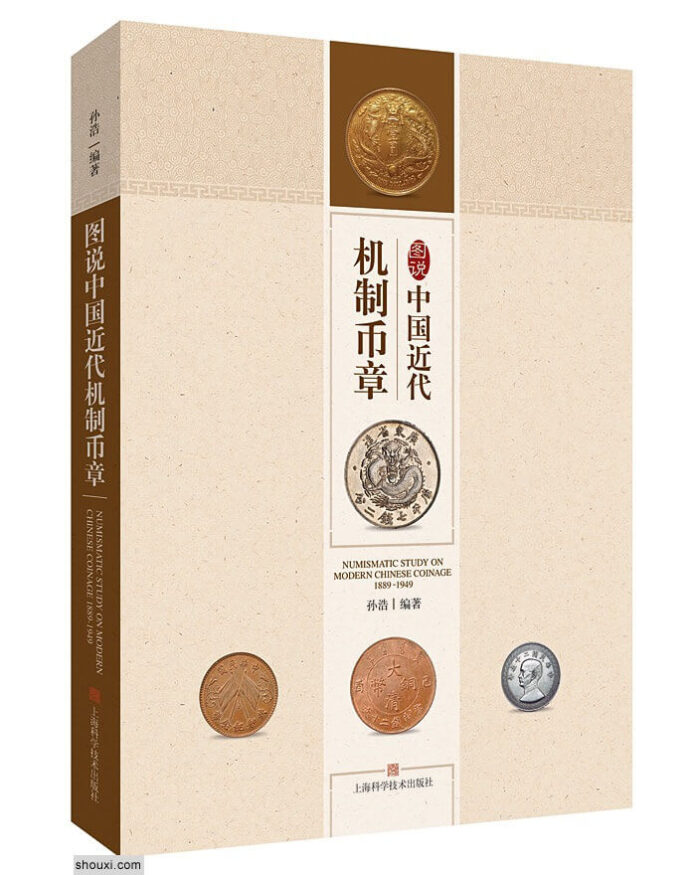
As Sun states in the preface of his second book, it had been a while since the first edition of One Hundred Years of Silver and Gold Coins was finished in 2012, and new thoughts and discoveries came out after that. In October 2017, the “Illustrated History of Milled Coinage and Medals of Modern China, 1889-1949” was published as updates for the previous volume. As a portfolio, some of the essays had been published in numismatic journals. The Illustrated History expands the scope to a wider range, including copper coins, nickel coins, medals, and minting technologies, that it comprises seven chapters.
In his second book, Sun further explains his work and revises some conclusions in the first book. For example, he had offered that Otto Beh’s company had made dies and patterns for Heilungkiang, Anhui, and Fungtien in the late nineteenth century but no more details. In the second book, he shows how many dies the Otto Beh provided, and the costs of these dies by acquiring 125 Jahre Gravier – und Prägeanstalt Otto Beh, Esslingen: Medaillen – Plaketten – Anstecknadeln by Gerhard Kümmel. He also offers the pictures of the dies in the book that those who did not access the German recourse can appreciate the dies and patterns.
Sun’s research on the “Shanghai One Tael” is significant as well. For years, Chinese scholars had believed that the rare patterns of the “Shanghai One Tael” were struck by Shanghai Municipal Council. Sun corrects the statement by offering evidence provided by Alphonse Woodward who concluded that people misread “Shanghai One Tael” which, in fact, was “One Shanghai Tael.” “Shanghai” was not the name of the place where the patterns were struck but referred to the name of the standard scale, which was Caoping (Tribute standard scale). The patterns were manufactured at the Hong Kong Mint under the leadership of Sir Hercules Robinson who wanted to gain benefits in mainland China.
Furthermore, Sun investigates dozens of medals that were related to Chinese history from the late Qing dynasty to 1949. Medals, as one of the key ingredients of numismatics, play as indispensable complements in monetary history from ancient times till today. However, most publications in Chinese focus on medals after 1949. The historical medals in Sun’s book including medals commemorating to the Chinese Viceroy Li Hungchang’s visit to Otto von Bismarck in 1896, medals of Tientsin Provisional Government, and a silver medal commemorating Chinese colonists celebrating centennial of Peru in 1921. These medals demonstrate their values as witnesses to history.
The last chapter, like the one in the previous book, functions as an appendix. He further discusses relevant concept of milled coinage like master die, master hub, and working die. By examining the work sequences of minting, he concludes that die cracks, which would reveal a raised line of metal in the finished coins, cannot implicate the state of dies because a crack may occur at any time during the process. It is inaccurate to link up the state of a die and the existence of a crack. Coin collectors also have to think of the quality of the blanks and the stamping press. This is a groundbreaking work since no monograph has, in particular, focused on the history of minting technology in Chinese for the time being.
Taken together, the work of Mr. Sun is a remarkable scholarly achievement, and serves as a testament to the importance of Chinese numismatics and collectibles market, and to the studies of disciplines like monetary history and economic history. Both books leave no doubt that this is both a productive and necessary way forward. Of particular importance is the fact that, though the coinage history of China is different from the West, cross-referencing of primary resources from home and abroad and close cooperation with markets where are most sensitive to new findings have become important principles in numismatic studies. Sun’s books on Chinese milled coins are well-organized and clearly expressed, and they are partly account for a monetary history of modern China that Peng Xinwei did not discuss in his peerless A Monetary History of China published in 1950s, and they can be seen as a milestone in the history of Chinese numismatics.
You can buy the book at ebuy7.
Here you can find Yawei Zhang’s review of Sun Hao’s book „One Hundred Years of Chinese Silver and Gold Coins“.
Read more about the history of Chinese coinage in our series: part 1, part 2 and part 3.




